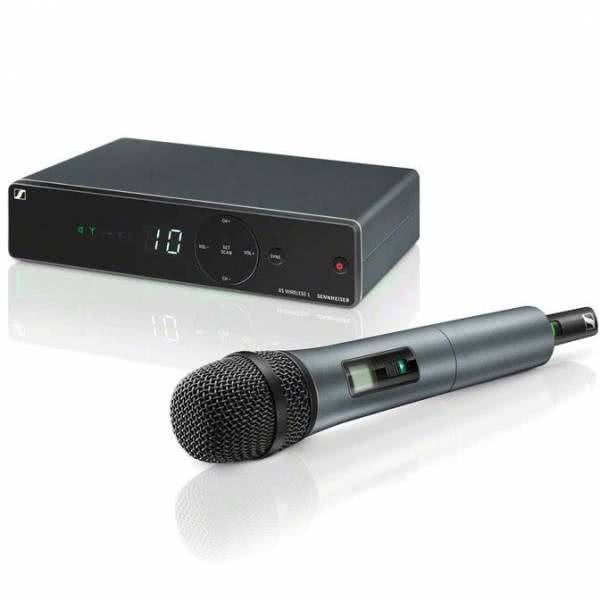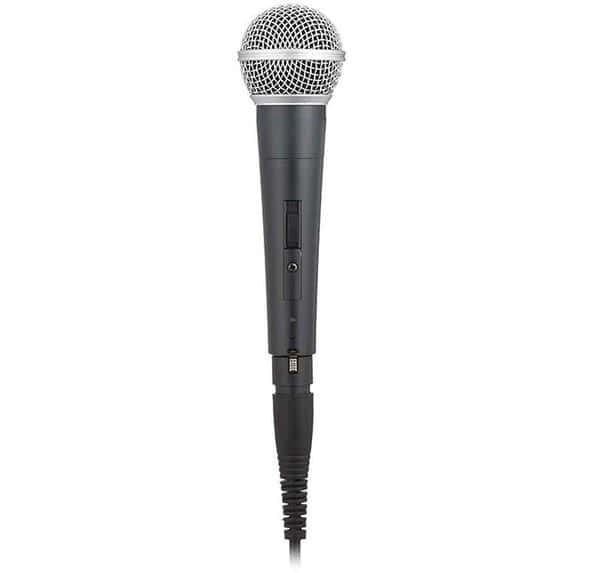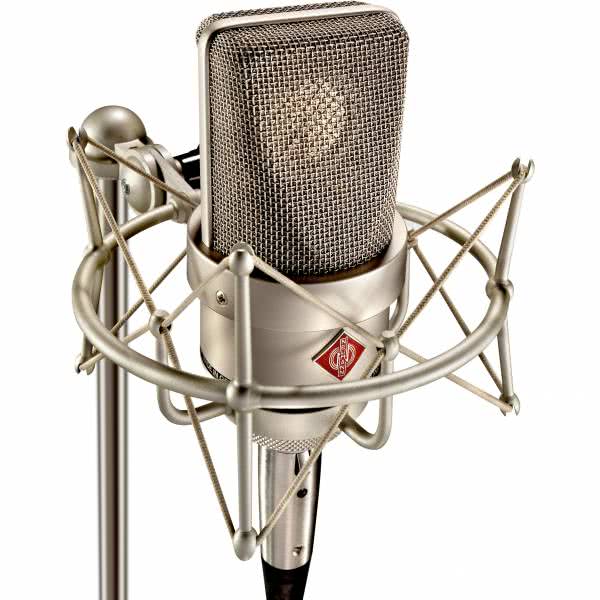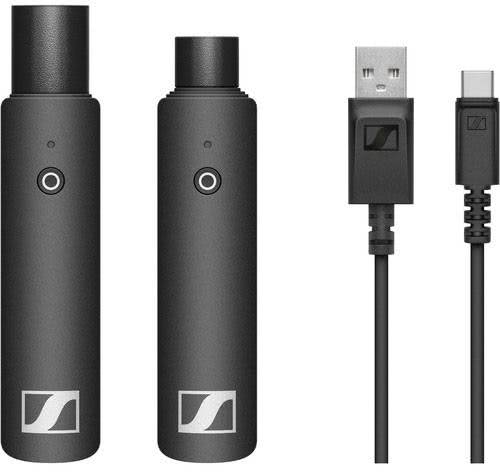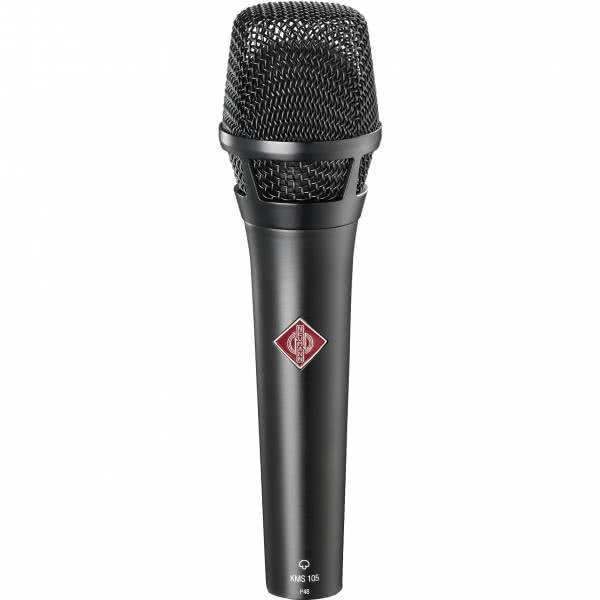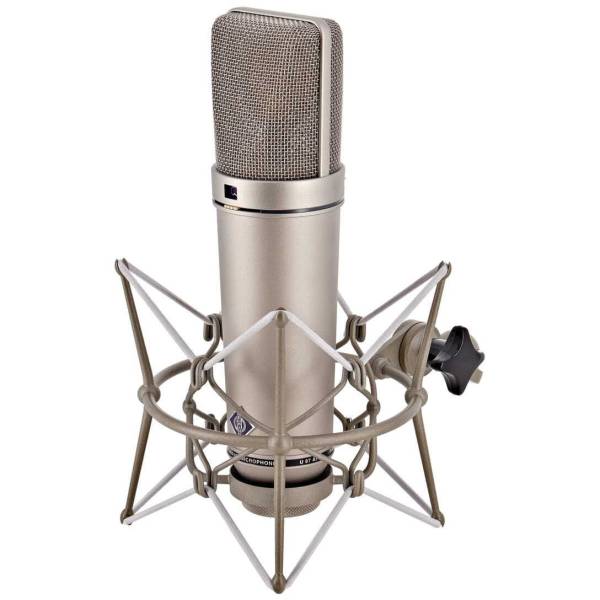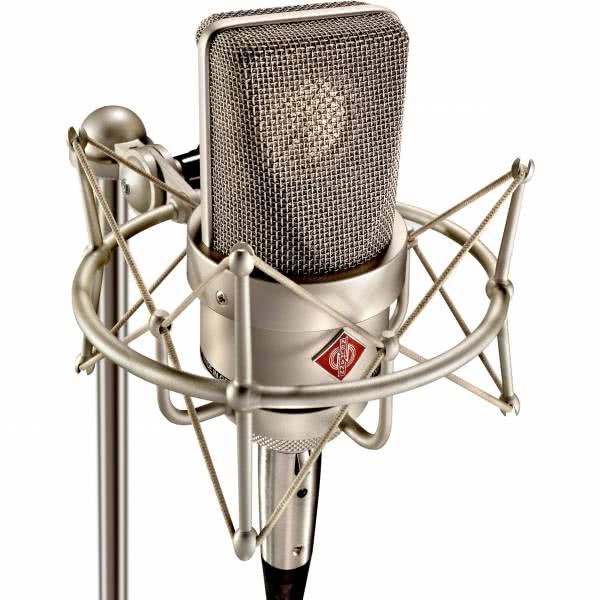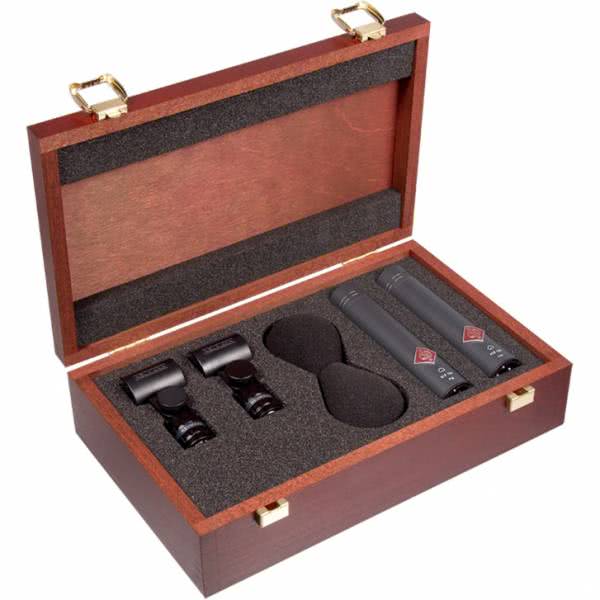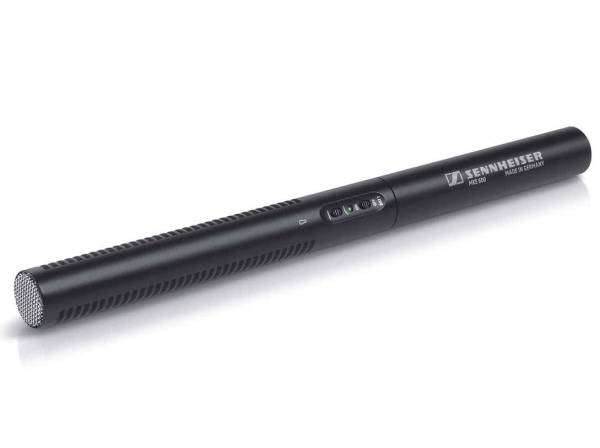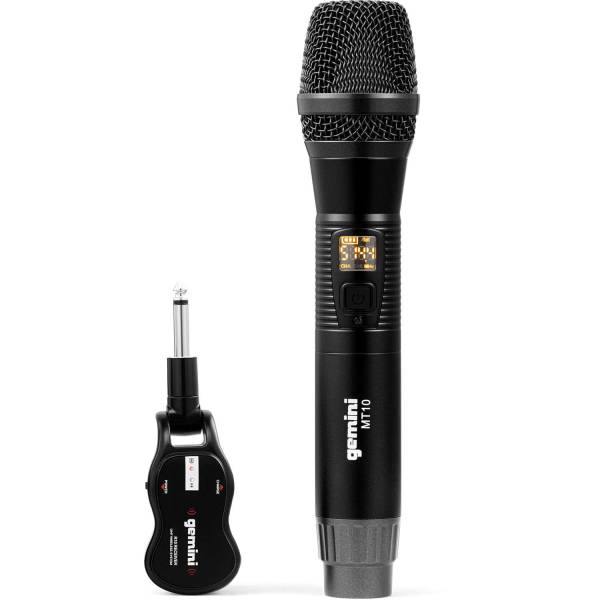Professionelle Tontechniker wissen, dass die Wahl des Mikrofons ein wesentlicher Bestandteil jeder guten Aufnahme ist.
Wer jedoch neu in der Welt der Aufnahmetechnik ist, dann ist das Thema Mikrofone wahrscheinlich in ein Mysterium gehüllt. Mit ein wenig Studioerfahrung lernt man, dass bestimmte Studiomikrofone für die Aufnahme bestimmter Instrumente gut funktionieren, aber ohne ein Verständnis der akustischen Theorie wirst Du wahrscheinlich nicht verstehen, warum.
Sollte man zu einem dynamischen oder einem Kondensatormikrofon greifen? Röhren- oder Halbleitermikrofon? Die Auswahl an Studiomikrofonen ist so groß, dass ein grundlegendes Verständnis der Mikrofontypen und ihrer Einsatzmöglichkeiten hilfreich sein kann. Eine schlechte Mikrofonwahl sticht meistens im Mix hervor - aber keine Angst!
Unser Mikrofon-Kaufratgeber entschlüsselt die Geheimnisse der Mikrofone und bringt dich auf den Weg zu fantastisch klingenden Aufnahmen.
Typen von Mikrofonen
Dynamische Mikrofone
 In einem dynamischen Mikrofon wird das Audiosignal durch die Bewegung eines Leiters innerhalb eines Magnetfeldes erzeugt. In den meisten dynamischen Mikrofonen bewegt sich eine sehr dünne, leichte Membran in Reaktion auf den Schalldruck. Durch die Bewegung der Membran wird eine in einem Magnetfeld aufgehängte Schwingspule in Bewegung gesetzt, wodurch ein kleiner elektrischer Strom erzeugt wird.
In einem dynamischen Mikrofon wird das Audiosignal durch die Bewegung eines Leiters innerhalb eines Magnetfeldes erzeugt. In den meisten dynamischen Mikrofonen bewegt sich eine sehr dünne, leichte Membran in Reaktion auf den Schalldruck. Durch die Bewegung der Membran wird eine in einem Magnetfeld aufgehängte Schwingspule in Bewegung gesetzt, wodurch ein kleiner elektrischer Strom erzeugt wird.
Dynamische Mikrofone sind weniger empfindlich (für Schalldruckpegel und hohe Frequenzen) als Kondensatormikrofone und können im Allgemeinen mehr aushalten. Außerdem sind sie in der Regel preiswerter.
Dynamische Mikrofone eignen sich perfekt für die Aufnahme von Schlagzeug und E-Gitarre sowie für Live-Gesang. Das beliebteste Snare-Mikrofon aller Zeiten ist das legendäre Shure SM57 (auch für Gitarrenverstärker geeignet), dass immer noch einen Platz auf Studios und Bühnen weltweit findet.
Kondensator Mikrofone
 Wenn es dir um absolute Klangtreue geht, solltest du zu einem Kondensatormikrofon greifen. Kondensatormikrofone reagieren besser auf die "Geschwindigkeit" und Nuancen der Schallwellen als dynamische Mikrofone. Dieses einfache mechanische System besteht aus einer dünnen, gedehnten, leitfähigen Membran, die dicht an einer Metallscheibe (Backplate) angebracht ist.
Wenn es dir um absolute Klangtreue geht, solltest du zu einem Kondensatormikrofon greifen. Kondensatormikrofone reagieren besser auf die "Geschwindigkeit" und Nuancen der Schallwellen als dynamische Mikrofone. Dieses einfache mechanische System besteht aus einer dünnen, gedehnten, leitfähigen Membran, die dicht an einer Metallscheibe (Backplate) angebracht ist.
Diese Anordnung erzeugt einen Kondensator, der seine elektrische Ladung durch eine externe Spannungsquelle erhält - eine Batterie oder ein spezielles Netzteil oder eine Phantomspeisung, die von deinem Mischpult geliefert wird.
Die Membran des Mikrofons vibriert leicht als Reaktion auf den Schalldruck, wodurch sich die Kapazität verändert und eine Spannungsänderung erzeugt - der Signalausgang des Mikrofons. Kondensatormikrofone gibt es sowohl als Festkörper- als auch als Röhrenmikrofone und in einer Vielzahl von Formen und Größen - aber sie alle funktionieren nach diesem Prinzip.
Vor allem im Studio oder in Radio-Sendestationen sind eigentlich immer Kondensator-Mikrofone anzutreffen, da sie klanglich den dynamischen Mikrofonen weit überlegen sind.
Bändchenmikrofone
Im goldenen Zeitalter des Radios waren Bändchenmikrofone die ersten kommerziell erfolgreichen Richtmikrofone. Heute erleben Bändchenmikrofone dank der Bemühungen einer Handvoll Firmen wie Royer ein Comeback. Bändchenmikrofone reagieren auf die Geschwindigkeit von Luftmolekülen, die ein kleines, in einem starken Magnetfeld schwebendes Element bewegen, und nicht auf den Schalldruckpegel (SPL), der die meisten anderen Mikrofontypen "anregt".
Bei Studioanwendungen ist dieser Funktionsunterschied nicht wichtig, obwohl er bei Außenaufnahmen an einem windigen Tag kritisch sein kann! Die alten Bändchenmikrofone waren sehr empfindlich; die heutigen Bändchenmikrofone sind für den harten Studioalltag ausgelegt.
USB-Mikrofone
 Das USB-Mikrofon ist eine neuere Entwicklung in der Mikrofontechnik und enthält alle Elemente eines herkömmlichen Mikrofons: Kapsel, Membran usw. Was es von anderen Studiomikrofonen unterscheidet, sind zwei zusätzliche Schaltungen: ein integrierter Vorverstärker und ein Analog-Digital-Wandler (A/D).
Das USB-Mikrofon ist eine neuere Entwicklung in der Mikrofontechnik und enthält alle Elemente eines herkömmlichen Mikrofons: Kapsel, Membran usw. Was es von anderen Studiomikrofonen unterscheidet, sind zwei zusätzliche Schaltungen: ein integrierter Vorverstärker und ein Analog-Digital-Wandler (A/D).
Der integrierte Vorverstärker macht es überflüssig, dass das USB-Mikrofon an ein Mischpult oder einen externen Mikrofonvorverstärker angeschlossen werden muss. Der A/D-Wandler wandelt den Ausgang des Mikrofons von analog (Spannung) in digital (Daten) um, so dass er direkt an einen Computer angeschlossen und von einer Aufnahmesoftware gelesen werden kann.
Das macht die mobile digitale Aufnahme einfach wie das Einstecken des Mikrofons, das Starten der DAW und das Drücken der Aufnahmetaste!
Das lesen und interpretieren von Frequenzgangdiagrammen
Das Frequenzgangdiagramm eines Mikrofons kann dir eine Menge darüber verraten, welche Situationen für ein bestimmtes Mikrofon geeignet sind und welche nicht. Theoretisch werden die Frequenzgangdiagramme in der Fabrik erstellt, indem die Mikrofone in einem schalltoten Raum getestet werden.
Ein schalltoter Raum ist ein speziell konstruierter Raum, der nur für Audiotests genutzt wird. Die Idee dabei ist, eine kontrollierte Atmosphäre zu schaffen, in der jedes Mikrofon gleichermaßen getestet werden kann, so dass der Raum komplett tot ist, ohne jegliche Form von Schallreflexion.
In der Regel wird ein Lautsprecher vor dem zu testenden Mikrofon aufgestellt und rosa Rauschen abgespielt (rosa Rauschen sind alle Frequenzen mit gleicher Energie in jeder Oktave). Das Mikrofon wird in einen Spektrumanalysator geleitet, der den Ausgang misst und ein Frequenzgangdiagramm erstellt.
Das Diagramm ist in der Regel über den Bereich von 20Hz bis 20kHz, was dem Bereich des menschlichen Gehörs entspricht.
Wie liest man es aber nun?
Die horizontalen Zahlen in einem Mikrofon-Frequenzgangdiagramm repräsentieren die Frequenzen (wiederum meist im Bereich von 20 Hz bis 20 kHz) und die vertikalen Zahlen die relativen Antworten in dB (Dezibel). Wenn du dir ein Frequenzgangdiagramm ansiehst, kannst du erkennen, wie ein bestimmtes Mikrofon bei bestimmten Frequenzen abschneidet. Wie ist diese Information hilfreich? Nun, schauen wir uns das Frequenzgangdiagramm des berühmten Shure SM57 an:
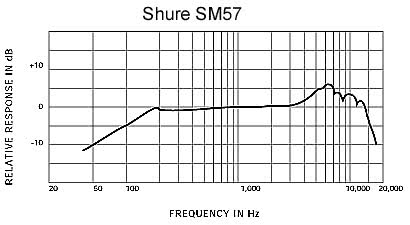
Der Frequenzgang des SM57 Mikrofons eignet sich besonders gut für bestimmte Instrumente wie z.B. eine Snare Drum, da die Grundfrequenz der Snare im Bereich von 150Hz bis 250Hz liegt - genau dort, wo das SM57 Frequenzgangdiagramm zeigt, dass der Frequenzgang des SM57 flach bzw. neutral ist. Mit anderen Worten, bei dieser Frequenz ist das, was du in das Mikrofon hinein hörst, auch das, was du am Ausgang hören wirst - nicht mehr und nicht weniger.
Der Anhebungs-Buckel der Frequenzen auf der rechten Seite des Diagramms ist genau dort, wo die Frequenz des "Snap" der Snare liegt. Außerdem eignet sich das Mikrofon mit seinem abflachenden Bassbereich hervorragend, um die Kick Drum, die oft sehr nah ist, zu betonen. Diese Kombination ist das, was die meisten Toningenieure in einem guten Snare Drum Mikrofon suchen - die Fähigkeit, den wahren Klang der Snare einzufangen, ihren Snap zu akzentuieren und andere Instrumente in unmittelbarer Nähe zurückzuweisen.
Die unterschiedlichen Mikrofon-Richtcharakteristiken
Niere
Mikrofone mit der Nieren-Richtcharakteristik fangen die Signale am besten ein, die vor ihnen erklingen, während sie den Schall von den Seiten und von hinten abweisen. Die grafische Darstellung der Richtcharakteristik ähnelt einem Herz (daher "Nierenform"). Die Fähigkeit, den Schall von hinten zu unterdrücken, macht die Nieren-Richtcharakteristik nützlich in Situationen, in denen mehrere Mikrofone verwendet werden und in denen es nicht wünschenswert ist, eine große Menge an Raumatmosphäre einzufangen.
Nierenmikrofone sind sowohl im Studio als auch bei Live-Auftritten beliebt (wo die Rückwärtsunterdrückung Rückkopplungen und Umgebungsgeräusche reduziert) und werden für einen sehr hohen Prozentsatz von Mikrofonanwendungen verwendet. Bedenke, dass Nierenmikrofone, wie alle Mikrofone ohne Nierencharakteristik, einen Nahbesprechungseffekt aufweisen (erhöhte Basswiedergabe, wenn das Mikrofon sehr nah an der Schallquelle ist).
Superniere und Hyperniere
Die Richtcharakteristik Superniere ist noch direkter nach vorne gerichtet als die Niere, die Hyperniere sogar abermals stärker. Im Gegensatz zur Niere haben beide Richtcharakteristiken empfindliche hintere Bereiche (bei der Superniere kleiner), die den Schall aufnehmen, was die Positionierung dieser stark gerichteten Mikrofone etwas schwierig machen kann.
Kugelcharakteristik
Mikrofone mit Kugelcharakteristik erfassen den Schall aus allen Richtungen gleichermaßen. Die grafische Darstellung der Richtcharakteristik ist ein Kreis. Ein Mikrofon mit Kugelcharakteristik weist keinen ausgeprägten Nahbesprechungseffekt auf. Alle Mikrofone werden prinzipiell erst einmal mit Kugelcharakteristik erzeugt. Die Richtcharakteristik wird dann durch zusätzliche technische Maßnahmen erzeugt. Kugelmikrofone sind großartige Studiomikrofone, um den Raumklang zusammen mit der Aufnahme zu erfassen.
Birektionales Pattern/Figure 8
Eine Achter Richtcharakteristik ist eine Form, bei der das Mikrofon für Schall, der von vorne und hinten aufgenommen wird, gleich empfindlich ist, aber Schall, der von den Seiten kommt, abweist. Dies ergibt eine Richtcharakteristik, die wie eine "Acht" aussieht, wobei sich die Mikrofonkapsel am Schnittpunkt der 8 befindet. Diese Mikrofoncharakteristik wird auch als bidirektional bezeichnet.
Mehrere Richtcharakteristiken
Viele professionelle Kondensatormikrofone haben umschaltbare Richtcharakteristiken. Typischerweise sind die Richtcharakteristiken Kugel, Niere und Acht vorhanden, so dass das Mikrofon an die jeweils passende Aufnahmesituation flexibel angepasst werden kann.
Unterschiede der Mikrofonmembrangrößen
Kondensator- und dynamische Mikrofone werden nach der Größe ihrer Kapsel klassifiziert. Traditionell hat dies zu zwei Klassen geführt: Großmembran- und Kleinmembranmikrofone; beide haben ihren Platz in einem gut ausgestatteten Studio. Das Mittelmembran-Mikrofon - eine relativ neue Entwicklung - kann als Hybrid betrachtet werden, der die Eigenschaften von Groß- und Kleinmembran-Mikrofonen in sich vereint.
Großmembran
Großmembran-Kondensatormikrofone wie das altehrwürdige Neumann U87 sind eine feste Größe im Studio. Von Gesang über Streicher und Blechbläser bis hin zu Percussion kann man mit Großmembran-Kondensatormikrofonen so gut wie alles aufnehmen. Die vielfältigen Abnahmecharakteristiken, die bei vielen Großmembran-Kondensatormikrofonen zu finden sind, machen sie zu den vielseitigsten Mikrofonen im Studio. Es gibt auch dynamische Großmembranmikrofone, die sich gut für die Aufnahme von lauten Quellen mit kräftigen Bässen eignen (z. B. Kick Drum oder Toms).
Mittelmembran
Die Definition von mittlerer Membran ist ein potentiell kontroverses Thema. Historisch gesehen gab es Großmembran- und Kleinmembran-Mikrofone, aber in letzter Zeit hat die mittlere Größe begonnen, eine eigene Kategorie zu bilden, obwohl sich nicht alle über die genauen Ober- und Untergrenzen einig sind. Die meisten Fachleute und Hersteller sind sich einig, dass jedes Mikrofon mit einer Membran von etwa 5/8″ bis 3/4″ Durchmesser als Mittelmembran bezeichnet werden kann. Im Allgemeinen neigen Mikrofone mit mittlerer Membran dazu, Transienten und hohe Frequenzen gut einzufangen (wie es eine kleine Membran tun würde), während sie einen etwas volleren, runderen und möglicherweise wärmeren Klang liefern (wie es eine große Membran tun könnte).
Kleinmembran
Die Kleinmembran-Kondensatormikrofone, die von Einsteigern oft im Schatten der Großmembran-Mikrofone gesehen werden, können in der Tat bei Anwendungen glänzen, bei denen ihre größeren Brüder nicht mithalten können. Ihre charakteristische extrem schnelle Ansprechzeiten ist genau auf ihre kleineren, leichteren Membranen zurückzuführen. Als Studiomikrofon für Akustikgitarre, Hi-Hat, Harfe - oder jedes andere Instrument mit scharfen Transienten und ausgedehnten Obertönen - sind Kleinmembranmikrofone für Drum-Overheads bei vielen Toningenieuren die erste Wahl. Der Vorteil dieser Kleingewichte (wegen ihrer typischerweise dünnen zylindrischen Form oft als Bleistiftmikrofone bezeichnet) ist, dass sie sich leicht positionieren lassen.





